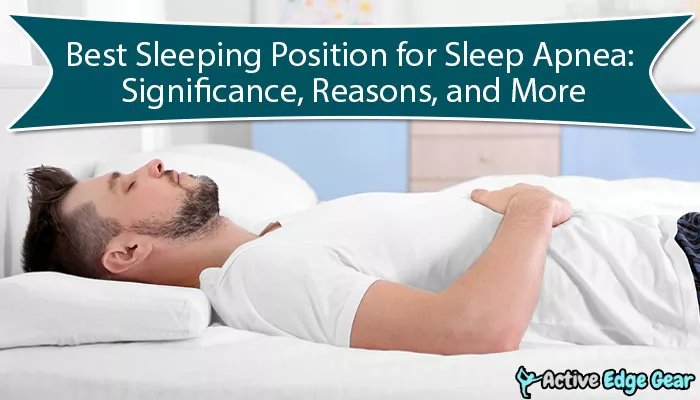Despite our numerous sleeping preferences, it eventually comes down to what works best for the breathing cycles. Moreover, if you are suffering from any extent of sleep apnea, the sleeping alignment becomes even more important.
However, before we can jump right into a discussion regarding the best sleeping position to counter the ill-effects of sleep apnea, it is necessary to focus on the breathing conditions and challenges pertaining to the horizontal position.
Horizontal Breathing: Challenges and Consideration
The moment you lie down on the bed, gravity starts working against your airways, making it harder to sustain proper cycles in case of pre-existing conditions. Moreover, as sleep apnea is associated with relaxed throat-based and nasal airways, a horizontal sleeping position doesn’t offer the requisite pressure to push the air right into the relaxed airways.
At night, if you are considering lying down in the supine position, the relaxed muscles make involuntary breathing almost impossible, resulting in a choking or gasping sensation. Therefore, a strict horizontal alignment or supine position interferes with the sleeping quality.
The supine position furthers your troubles as the gravitational pull on your jaw, soft palate, and tongue increases massively with each passing moment. Furthermore, this process narrows the existing airways and interferences with your sleep cycles, especially if you are suffering from the likes of OSA.
Can Prone Position Help?
Contrary to popular opinion that suggests that prone position to be gravity-defying, it still has its set of challenges. Positioning yourself in the concerned sleeping position might block the nose and mouth, thereby evolving as a counter-productive strategy.
Best Sleeping Position for Sleep Apnea: Going Lateral

Now that you have eliminated the diverse probabilities, it’s time to consider the diverse benefits of sleeping in a lateral position for eliminating the issues related to sleep apnea, regardless of the extent of the ailment. For starters, sleeping on sides is a great option for frequent snorers as the positioning of the body is then in alignment with the stability of the airways.
When it comes to snoring, the tissue surrounding the nose starts vibrating when the air starts passing through the same, eventually resulting in sounds. Sleeping on the sides gets rid of this anomaly by offering a natural pathway to the relaxed muscles for facilitating air entry.
Besides, better results are expected if you pair the lateral sleeping position with a contoured pillow that doesn’t bend out of shape and helps maintain lateral sleeping positions, for longer periods.
Moreover, if you sleep on your sides, regardless of the left or right position, the tongue doesn’t awkwardly fall back onto the airways, and issues related to gasping, shortage of breath, and OSA are combated almost instantaneously.
What if Sleeping on Sides isn’t an Option?
Individuals with broad shoulders and rib-cages might find it hard to sleep on the sides for longer periods. Sleeping on the back but with the head elevated is a good option for these individuals with physical restrictions. Besides, if this approach fails to work, they can always rely on a CPAP machine for mitigating the long-term issues related to sleep apnea.
Despite being a serious condition, sleep apnea and the associated issues are manageable provided you are willing to make lifestyle changes. This is where fixing the sleep position and opting for something more breathing assistive becomes necessary, to facilitate seamless breathing, even when you are asleep.

